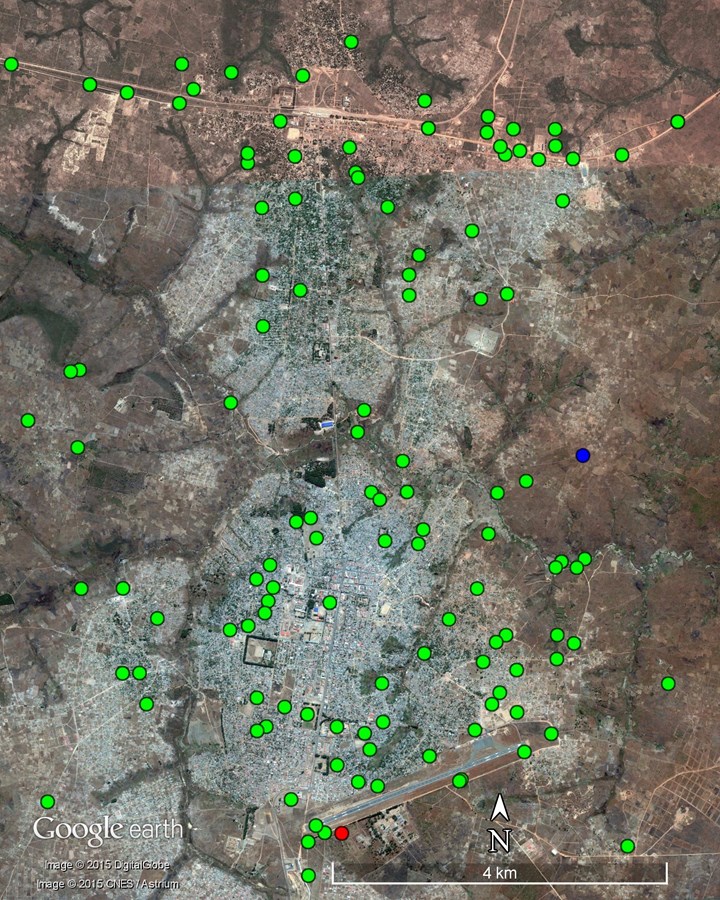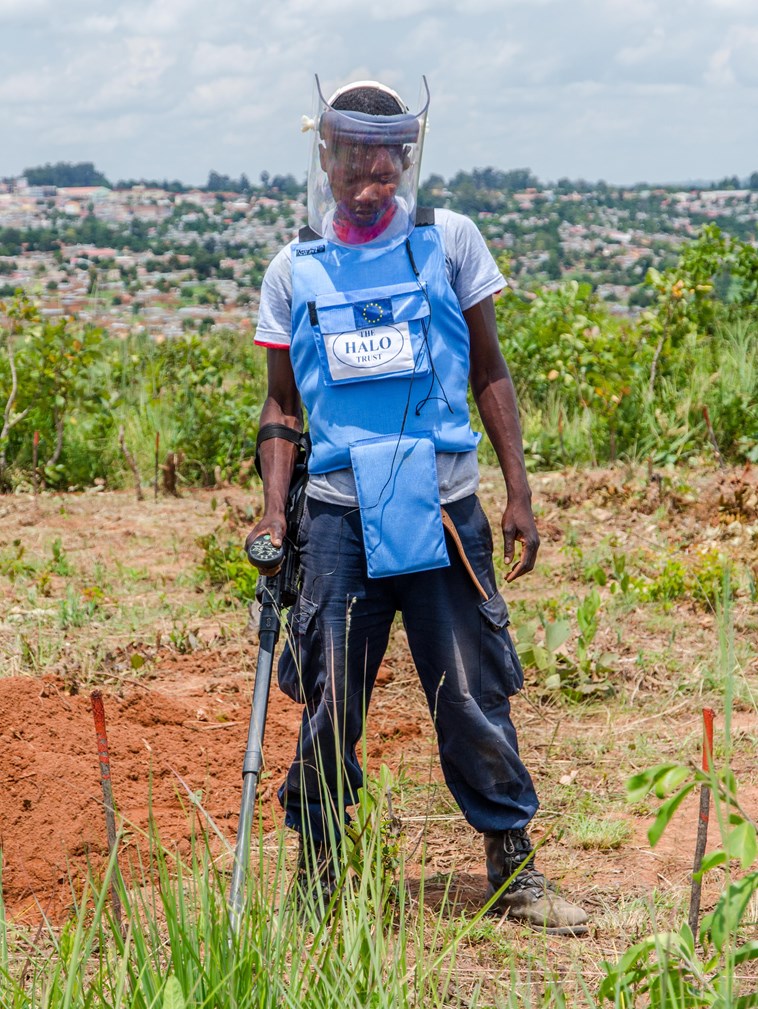Walking the recently re-painted streets of Kuito today reveals little of the horror that struck this central Angolan city during the country’s 27-year long war.
Tens of thousands of people died here as government and opposition forces battled it out for control for the strategically significant provincial capital. As the once bustling high street became the front line, the city was littered with minefields and ordnance. Kuito became impenetrable, it is estimated that 30,000 people died, mostly of starvation during the nine-month siege of 1993–4.
When the HALO Trust first arrived in 1994, its first task was clearing a minefield in support of the international charity Concern, enabling them to rebuild a primary school for the city’s children on the land.
We then turned our attention to clearing the city airport’s landing strip, which allowed the World Food Programme to bring vital emergency aid to the starving population. By removing and disposing of abandoned ammunition from the city’s main hospital, the charity Medicins Sans Frontieres were able to build a tuberculosis ward and provide latrines and a kitchen. Clearing mines from Government buildings in the heart of the city allowed critical administrative functions to return. But the city remained mired in human suffering. A visit by the late Princess Diana in 1997 revealed the terrible plight of its people, many of whom were injured by landmines and were now amputees.
Emergency assistance in place, HALO then began clearing land that presented the greatest risk to people whose lives had been devastated by the war. In the overcrowded dwellings of Bairro Catemo, for example, internally displaced communities were so desperate for housing, they were building shelter on suspected minefields. It took HALO years of painstaking clearance until the area was finally declared safe in 2000.
Twenty years later, Kambulucuto school has over 5000 pupils registered, the latest generation to have benefited from HALO’s clearance two decades ago. Streets are lined with shops and businesses intermingled with numerous churches. Kuito, once decimated by war and human suffering, is a living testimony to the transformational impact of humanitarian mine clearance.
One of the few remaining minefields at Camissamba on the outskirts of the city was cleared by HALO in 2015. A further three outlying minefields will be cleared in 2016 leaving just one minefield remaining.

The satellite map shows the scale and impact of (de)mining across the city - Green dots indicate minefields cleared by HALO since 1994. The blue dot is Camissamba minefield cleared in 2015. The red dot shows the position of the last known minefield at a FAA military camp beside the city’s airport.

A HALO deminer clearing a minefield at Camissamba, the last but one on the outskirts of Kuito city, visible in the background.




 Visit our HALO USA website
Visit our HALO USA website
